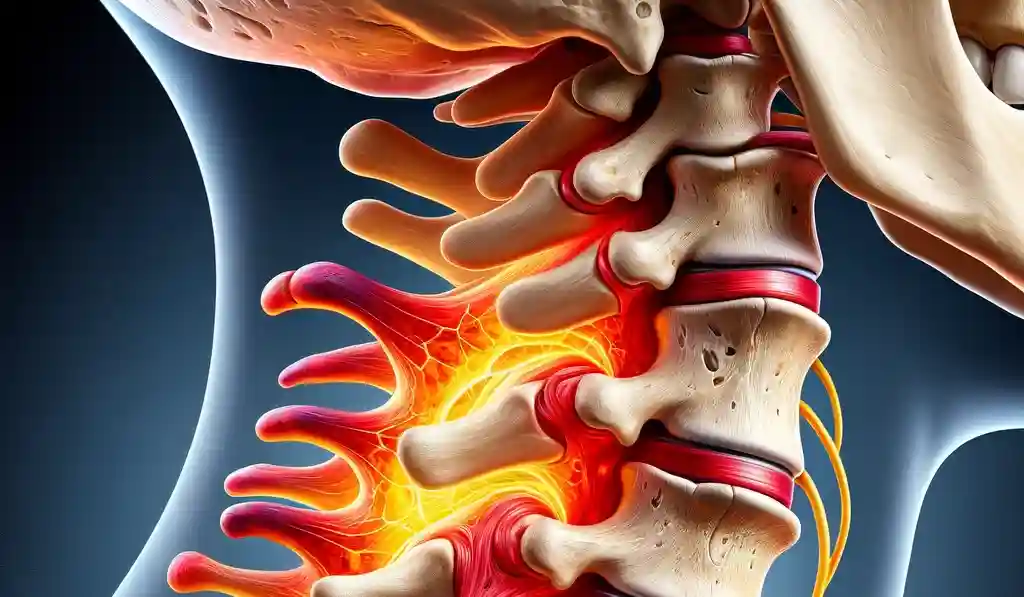Disc bulges are a common cause of back pain and discomfort affecting millions of people worldwide. Conditions such as central disc protrusion that is superimposed, disc bulge that abuts nerve root, eccentric disc bulge and paracentral protrusion all contribute to significant pain and mobility issues. Understanding these conditions and investigating efficient treatment options is vital in reducing pain and improving quality of life. Dr. Ken Nakamura, a top chiropractor, provides information on these conditions and offers guidance on how to deal with them effectively.
What is the Disk Bulge (or the Disc Bulge)?
A disc bulge can occur in the intervertebral disc that serves as a cushion between vertebrae, extends past its normal limits. It can be caused by degeneration, wear and tear, injury or over time. The degree of disc bulges vary from small protrusions that have little or no symptoms, to larger bulges that may cause discomfort and pain.

Superimposed Central Protrusion of Disc
Superimposed central disk protrusion (SCP) is one type of disc bulge that is found in the middle of the spinal cord. According to Dr. Ken Nakamura this protrusion could cause compression to the spinal cord and nerve roots, leading to symptoms such as numbness or pain. It’s hard to treat this issue due to its central position which could cause it to be felt on both the right and left sides of the body.
Disc Bulge Abutting Nerve Root Treatment
If a disc bulge is located near a nerve root, it can cause severe neurologic symptoms and pain, like sciatica, which is a painful condition which radiates down your leg. When pressure is not treated, it can affect the spinal nerve root may result in pain, inflammation and even loss of function.
Dr. Nakamura explains that disc bulge abutting nerve root treatment a nerve root typically involves a combination of conservative and, in some cases, interventional approaches. Therapy, anti-inflammatory medication as well as a reduction in activity can be used as treatments that are conservative to lessen pressure on the nerves. In cases of extreme nerve compression surgery or epidural injections may be required to provide relief.
Eccentric Bulge of Disc
A bulge in the disc that is eccentric occurs when it isn’t centered and generally occurs on the opposite side of the spinal canal. The type of bulge could cause unilateral symptoms, meaning that pain, as well as other issues are typically located on one side of the body. Circular disc bulges are extremely hazardous because they may compress nerve roots, causing the body to feel weak or painful in a specific area.
Dr. Nakamura emphasizes the fact that treatment for an eccentric disc bulge includes physical therapy, which strengthens the muscles that surround your spine, and helps improve flexibility. This can help relieve symptoms and lessen pressure on the affected discs. In some cases non-surgical therapies like spinal decompression therapy could be suggested to lessen the bulge and relieve pressure on the nerve.
Paracentral Protrusion
Paracentral protrusions are a type disc bulge that occurs within the spinal canal in the center but to the side. It can also trigger nerve root pressure, which is like the other types of bulges. Its symptoms are the feeling of numbness, pain and weakness.
Dr. Nakamura advises that treatment for paracentral protrusion often involves an array of conservative therapies that include physical therapy, pain management strategies, and lifestyle modifications. For severe cases of paracentral protrusion, surgery is often required to remove the disc material that protrudes and then decompress the nerve.
Treatment of disc bulge-related pain
The management of disc bulge-related pain depends on the severity of the problem and the specific signs that you experience. It is possible to use conservative treatment in cases of moderate to mild in reducing pain and enhancing functionality. This can include:
Physical therapy Exercises specifically designed to strengthen the muscles supporting the spine, and increase flexibility.
Pain Management Utilizing anti-inflammatory drugs and muscle relaxants in order to decrease pain and inflammation.
Lifestyle Modifications – Adjustments made to everyday activities that won’t cause more discomfort for the patient. Examples include a proper posture and ergonomic adjustments, avoiding heavy lifting, etc.
Interventional Therapies: In cases when conservative treatment options are not sufficient alternatives such as epidural steroid injections or minimally invasive surgical procedures might be thought of.
Conclusion
Effective pain management requires that you understand the subtleties of various conditions, including superimposed central disk protrusion, bulge disc abutting the nerve root, an eccentric bulge disc and paracentral bulge. Dr. Ken Nakamura emphasizes that it is important to recognize the symptoms, seek proper treatment, and improve overall quality-of-life. It is important to manage disc bulges using non-invasive methods or in certain instances, surgery in order to live a pain-free life. of discomfort.